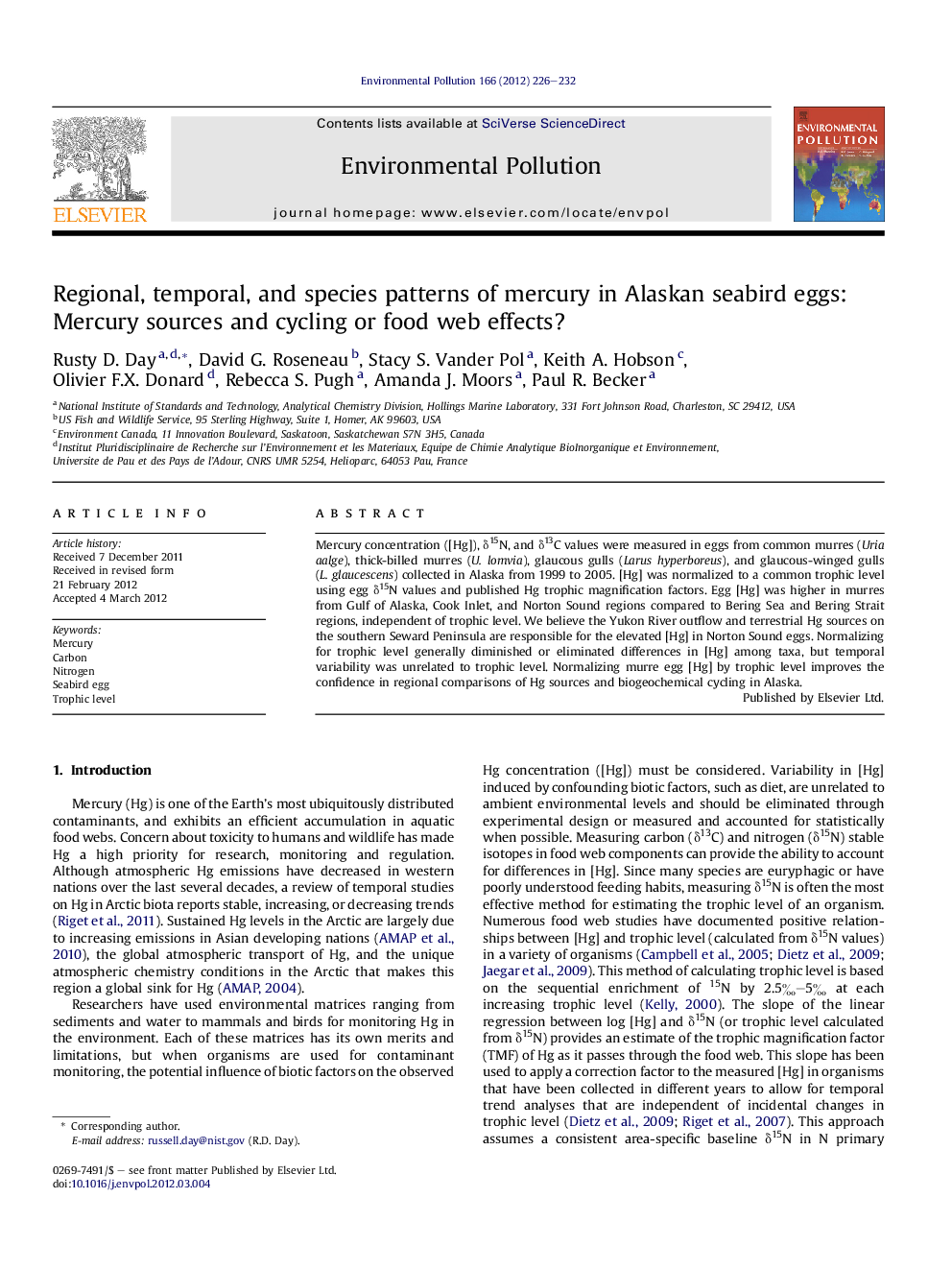| Article ID | Journal | Published Year | Pages | File Type |
|---|---|---|---|---|
| 4425040 | Environmental Pollution | 2012 | 7 Pages |
Mercury concentration ([Hg]), δ15N, and δ13C values were measured in eggs from common murres (Uria aalge), thick-billed murres (U. lomvia), glaucous gulls (Larus hyperboreus), and glaucous-winged gulls (L. glaucescens) collected in Alaska from 1999 to 2005. [Hg] was normalized to a common trophic level using egg δ15N values and published Hg trophic magnification factors. Egg [Hg] was higher in murres from Gulf of Alaska, Cook Inlet, and Norton Sound regions compared to Bering Sea and Bering Strait regions, independent of trophic level. We believe the Yukon River outflow and terrestrial Hg sources on the southern Seward Peninsula are responsible for the elevated [Hg] in Norton Sound eggs. Normalizing for trophic level generally diminished or eliminated differences in [Hg] among taxa, but temporal variability was unrelated to trophic level. Normalizing murre egg [Hg] by trophic level improves the confidence in regional comparisons of Hg sources and biogeochemical cycling in Alaska.
► Seabird eggs used for monitoring Hg in Alaskan marine environment. ► Egg Hg concentrations normalized to common trophic level using δ15N. ► Geographic Hg patterns persist independent of trophic normalization. ► Trophic normalization reduces difference among taxa, but not temporal variability. ► Measuring δ15N and δ13C improve interpretation of seabird mercury monitoring data.
